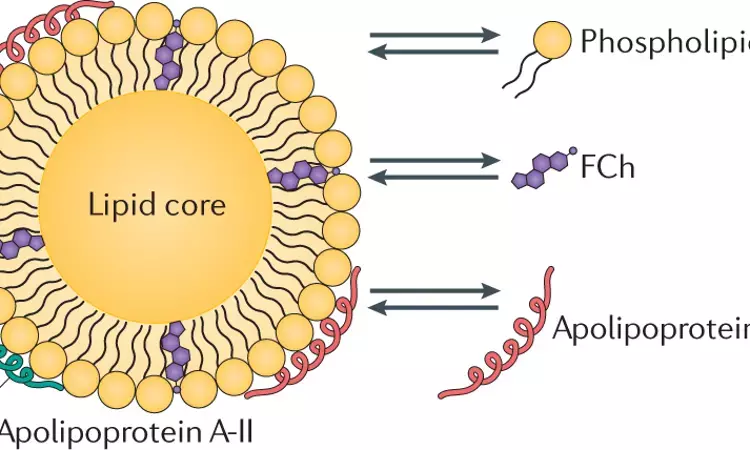- Home
- Medical news & Guidelines
- Anesthesiology
- Cardiology and CTVS
- Critical Care
- Dentistry
- Dermatology
- Diabetes and Endocrinology
- ENT
- Gastroenterology
- Medicine
- Nephrology
- Neurology
- Obstretics-Gynaecology
- Oncology
- Ophthalmology
- Orthopaedics
- Pediatrics-Neonatology
- Psychiatry
- Pulmonology
- Radiology
- Surgery
- Urology
- Laboratory Medicine
- Diet
- Nursing
- Paramedical
- Physiotherapy
- Health news
- Fact Check
- Bone Health Fact Check
- Brain Health Fact Check
- Cancer Related Fact Check
- Child Care Fact Check
- Dental and oral health fact check
- Diabetes and metabolic health fact check
- Diet and Nutrition Fact Check
- Eye and ENT Care Fact Check
- Fitness fact check
- Gut health fact check
- Heart health fact check
- Kidney health fact check
- Medical education fact check
- Men's health fact check
- Respiratory fact check
- Skin and hair care fact check
- Vaccine and Immunization fact check
- Women's health fact check
- AYUSH
- State News
- Andaman and Nicobar Islands
- Andhra Pradesh
- Arunachal Pradesh
- Assam
- Bihar
- Chandigarh
- Chattisgarh
- Dadra and Nagar Haveli
- Daman and Diu
- Delhi
- Goa
- Gujarat
- Haryana
- Himachal Pradesh
- Jammu & Kashmir
- Jharkhand
- Karnataka
- Kerala
- Ladakh
- Lakshadweep
- Madhya Pradesh
- Maharashtra
- Manipur
- Meghalaya
- Mizoram
- Nagaland
- Odisha
- Puducherry
- Punjab
- Rajasthan
- Sikkim
- Tamil Nadu
- Telangana
- Tripura
- Uttar Pradesh
- Uttrakhand
- West Bengal
- Medical Education
- Industry
HDL cholesterol and apolipoprotein A ratio linked to diabetic retinopathy in diabetics

High-density lipoprotein cholesterol and apolipoprotein A ratio linked to diabetic retinopathy in diabetics suggests a new study published in the Journal of Diabetes and its Complications
The study is aimed to investigate the relationship between high-density lipoprotein cholesterol to apolipoprotein A ratio (HDL-C/ApoA) and diabetic retinopathy (DR) in subjects with type 2 diabetes mellitus (T2DM).
They retrospect the consecutive medical files of 1058 subjects with T2DM and recorded their clinical information and laboratory findings. Subjects with T2DM were divided into DR group (n = 522) and non-DR group (n = 536). We compared the lipids values of the two groups. Meanwhile we also observed the prevalence of DR at different HDL-C/ApoA levels. Binary logistic regression was used to correct confounding factors. Smooth curve fitting model and subgroup analysis were used to determine the correlation, non-linear relationship and threshold effect between HDL/ApoA and DR.
Results
HDL-C/ApoA value of DR group was significantly higher than non-DR group (0.88 ± 0.17 vs 0.84 ± 0.13, P < 0.05). The prevalence of DR significantly increased as HDL-C/ApoA level increased. There was association between HDL/ApoA levels and DR in the adjusted models (OR 1.55, 95%CI 0.60 to 4.02). After full adjustments for other relevant clinical covariates, patients with HDL/ApoA values in quartile 3 (Q3) had 1.50 times (95 % CI 1.00 to 2.17) and in Q4 had 2.39 times (95%CI 1.65 to 3.47) as high as the risk of DR compared with patients in Q1. HDL/ApoA showed a non-linear relationship with DR, with an inflection point value of 0.759. When HDL/ApoA>0.759, HDL/ApoA was significantly positively associated with DR (HR = 26.508, 95 % CI 7.623–92.174; P < 0.0001). Compared to patients with age < 60, HDL/ApoA was obviously associated with DR when age ≥ 60 (OR = 38.05, 95 % CI 8.06–179.69; P < 0.001).
HDL-C/ApoA was found to be associated with the incidence of DR in patients with T2DM. After adjusting potential related factors HDL-C/ApoA OR value was 1.55 (95%CI 0.60 to 4.02). A non-linear association between HDL/ApoA and DR was observed in T2DM. Subgroup analysis showed that age could alter the relationship between HDL/ApoA and DR.
Reference:
Cong Zhang, Wenjian Lin, Qian Xu, Hongxue Li, Chengye Xu, Xuefei Ma, Ming Hao, Hongyu Kuang. Association between high-density lipoprotein cholesterol to apolipoprotein A ratio and diabetic retinopathy: A cross-sectional study, Journal of Diabetes and its Complications, Volume 37, Issue 6, 2023, 108471,ISSN 1056-8727, https://doi.org/10.1016/j.jdiacomp.2023.108471.
(https://www.sciencedirect.com/science/article/pii/S1056872723000697)
Dr. Shravani Dali has completed her BDS from Pravara institute of medical sciences, loni. Following which she extensively worked in the healthcare sector for 2+ years. She has been actively involved in writing blogs in field of health and wellness. Currently she is pursuing her Masters of public health-health administration from Tata institute of social sciences. She can be contacted at editorial@medicaldialogues.in.
Dr Kamal Kant Kohli-MBBS, DTCD- a chest specialist with more than 30 years of practice and a flair for writing clinical articles, Dr Kamal Kant Kohli joined Medical Dialogues as a Chief Editor of Medical News. Besides writing articles, as an editor, he proofreads and verifies all the medical content published on Medical Dialogues including those coming from journals, studies,medical conferences,guidelines etc. Email: drkohli@medicaldialogues.in. Contact no. 011-43720751


